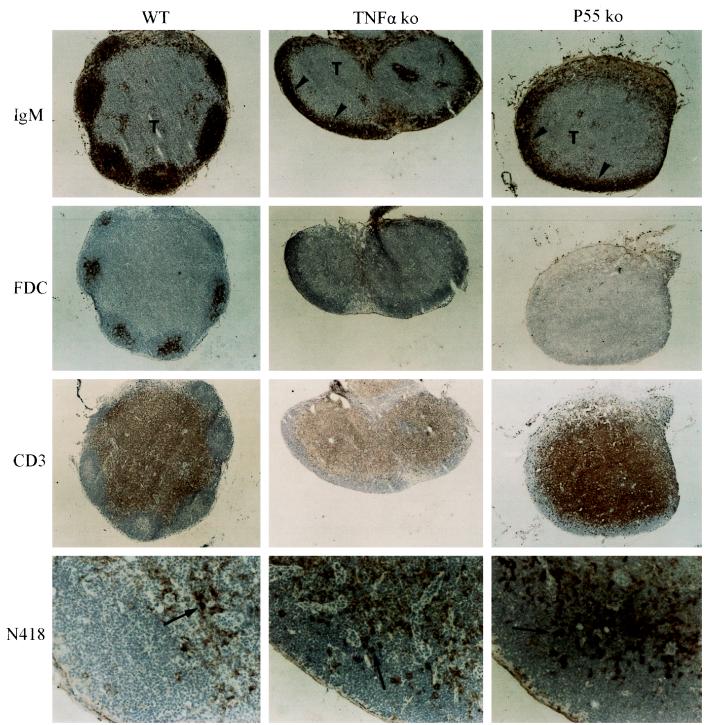Immunology. In the article “Peyer’s patch organogenesis is intact yet formation of B lymphocyte follicles is defective in peripheral lymphoid organs of mice deficient for tumor necrosis factor and its 55-kDa receptor” by Manolis Pasparakis, Lena Alexopoulou, Matthias Grell, Klaus Pfizenmaier, Horst Bluethmann, and George Kollias, which appeared in number 12, June 10, 1997, of Proc. Natl. Acad. Sci. USA (94, 6319–6323), the authors request that the following correction be noted. On page 6321, Fig. 2 was printed without the appropriate labels. A corrected figure and its legend is reproduced below.
Figure 2.
Normal B cell homing, yet impaired formation of organized follicles in lymph nodes of mice lacking either TNF or the p55TNF-R. Cryostat sections of inguinal lymph nodes from wild-type, TNF knockout, and p55TNF-R knockout mice were analyzed by immunoperoxidase staining, developed with diaminobenzidine, and counterstained with hematoxylin. Staining with antibody to IgM shows a normal localization of B cells in the outer cortex of lymph nodes from TNF or p55TNF-R knockout mice (arrowheads); however, in contrast to wild-type mice, they are not organized into follicles but form a thin layer covering the cortex area. A similar distribution of B cells was observed by staining with anti-B220 or anti-IgD antibodies (not shown). FDC networks identified here with the FDC-M2 mAb are observed to form within follicles in wild-ype but not in TNF- or p55-deficient lymph nodes. Additional staining with FDC-M1 failed to detect any FDC networks in lymph nodes from TNF or p55 knockout mice (not shown). In contrast, T cells visualized here with anti-CD3 mAb and N418+ DC (arrows) appear to develop normally in lymph nodes from these mice. Similar results were observed in mesenteric lymph nodes. F, B cell follicles; T, T cell-rich areas. (×20; ×100 for N418 staining).



